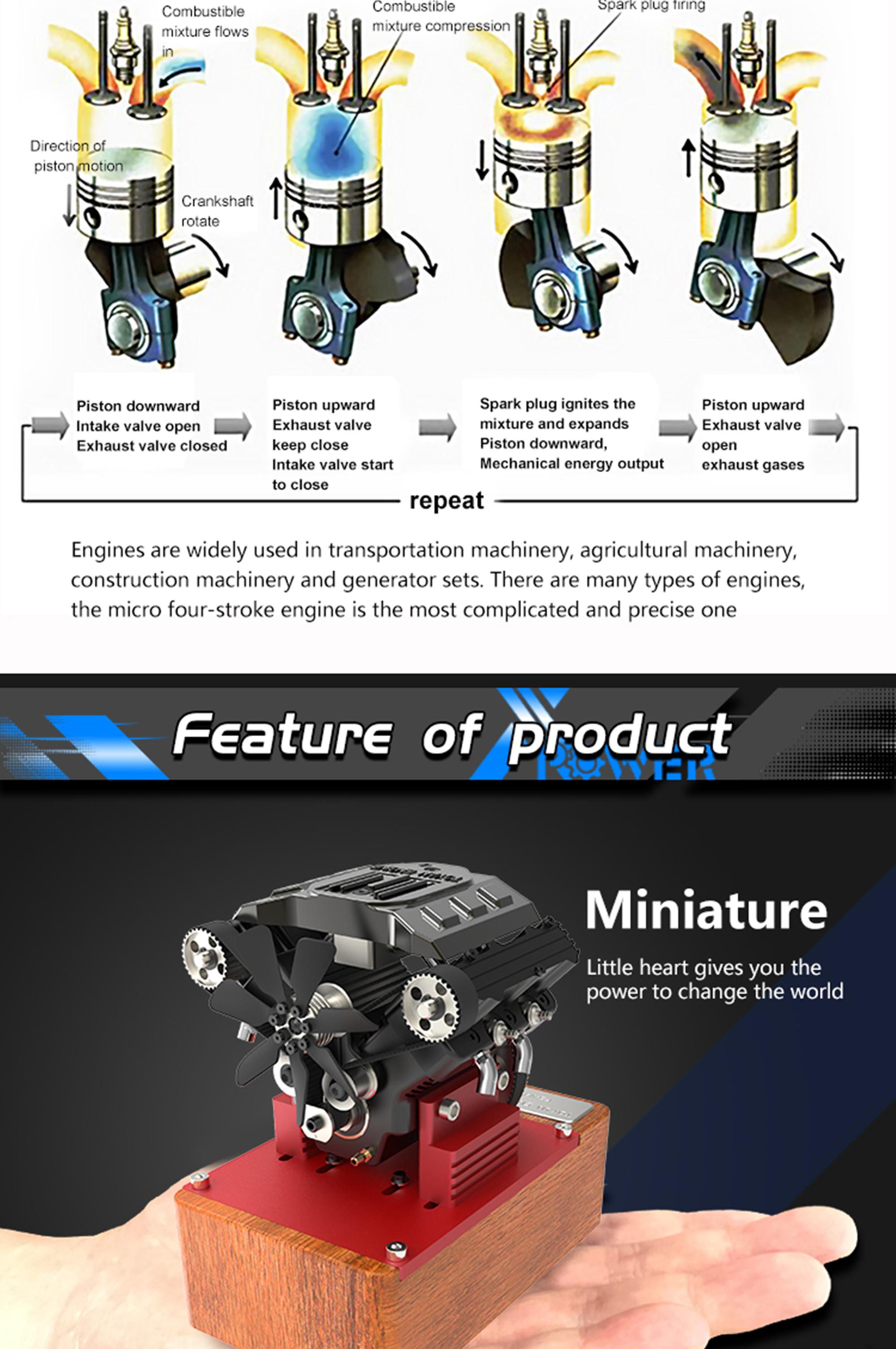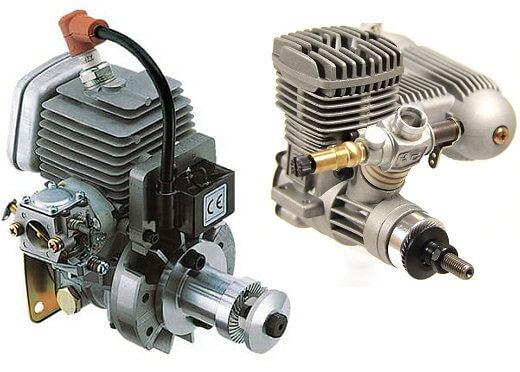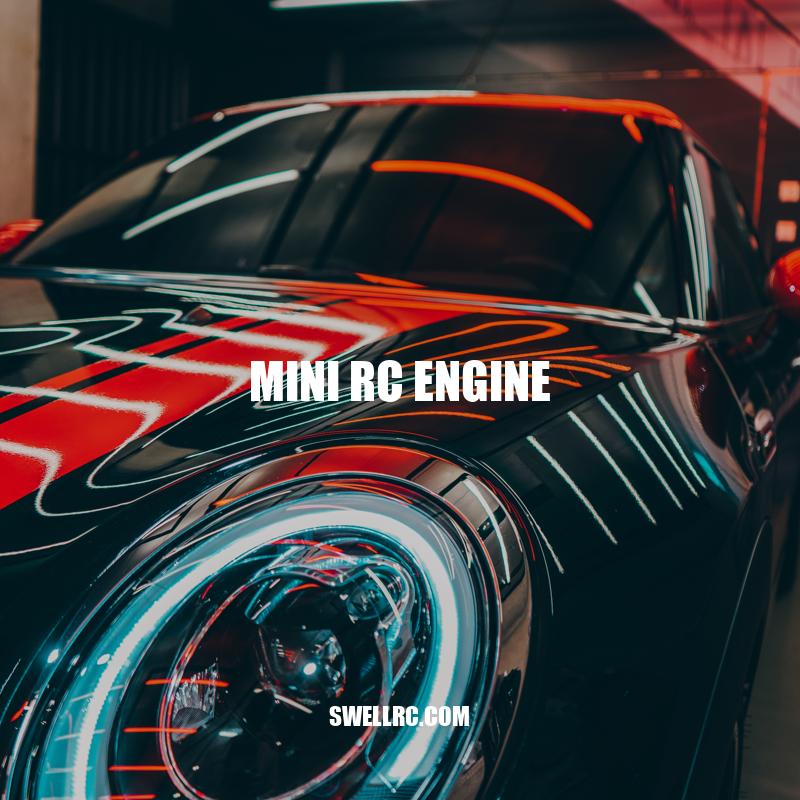Exploring the Features and Types of Mini RC Engines
In the world of remote-controlled (RC) cars, a mini RC engine has become increasingly popular. RC cars have been a staple in the toy industry for years, but mini RC engines have only recently gained attention due to the surge in demand for smaller and more portable RC cars. Contrary to larger-scale RC cars, mini RC engines are smaller in size, but provide enough power to give users a thrilling experience. Despite their small size, mini RC engines have impressive features. These engines are durable and can withstand the wear and tear required for competitive RC races. They’re also user-friendly and easy to maintain, with most spare parts readily available. Mini RC engines commonly use either electric or nitro as their power source, depending on the model.
Features and Power Sources of Mini RC Engines
- Mini RC engines have impressive features
- They are durable, user-friendly, and easy to maintain
- Spare parts are readily available in the market
- Mini RC engines commonly use either electric or nitro as their power source, depending on the model
- Nitro engines are high-speed with more power suitable for racing
- Four-stroke nitro engines are ideal for trick and stunting RC cars because of their smooth throttle response
- Brushed motors are cheaper, but tend to wear out faster, while brushless Motors are more efficient, produce less heat and friction, and have a longer lifespan
- Some websites offer mini RC engine products, such as Tower Hobbies, Horizon Hobby, and Amazon

What are the differences between brushed and brushless motors in mini RC engines?
The main difference between brushed and brushless motors in mini RC engines is that brushed motors have carbon brushes that make contact with the commutator to transmit power, while brushless motors use electronic speed controllers and a direct current power source to send power to the motor. Brushless motors are generally more efficient, longer-lasting, and produce more power than brushed motors.
Mini RC Engine Performance Differences
Mini RC engines come in different types, each with its unique performance. Here are some of the mini RC engines and their performance differences:
| Type | Performance |
|---|---|
| Two-stroke nitro engines | Provide high speeds and more power suitable for racing. |
| Four-stroke nitro engines | Have a smooth throttle response and are ideal for trick and stunting RC cars. |
| Brushed motors | Cheaper but tend to wear out faster. |
| Brushless Motors | More efficient, produce less heat and friction, and have a longer lifespan. |
Interesting fact: Did you know that the Fastest Dynamically balanced RC engine powered car is the “Radio Controlled Bullet,” clocking an impressive speed of 325.12 km/h (202.02 mph)? Some websites offer mini RC engine products, such as Tower Hobbies, Horizon Hobby, and Amazon.

What are the different types of mini RC engines and how does their performance differ from one another?
There are various types of mini RC engines, including electric, nitro, and gas-powered engines. Electric engines are usually less powerful but quieter and require less maintenance, while nitro engines are faster and more powerful but are also louder and require more maintenance. Gas-powered engines are the most powerful, but also the loudest and most expensive.
Mini RC Engines are essential in ensuring that small-scale RC cars function correctly, catering to users who prefer small, portable models over larger ones. Identifying the different types of mini RC engines is vital in selecting the one that meets a user’s specific needs. In addition, factors such as durability, user-friendliness, and power sources make mini RC engines ideal for an exciting and memorable RC racing experience.
Furthermore, the mini RC engine industry is constantly evolving and innovating to meet users’ demands for better performance and functionality. Manufacturers of mini RC engines are continually researching and upgrading these essential components to improve speed, accuracy, and durability. Such advancements have enabled RC enthusiasts to enjoy an even more exciting and elevated experience with their RC cars.
In conclusion, mini RC engines have revolutionized the RC car industry by providing excellent power, size, and functionality suitable for portable RC cars’ demands. With advancements in the technology and manufacturing of mini RC engines, the industry is poised for more breakthroughs that will make RC racing more thrilling and memorable. Whether for racing or stunt RC cars, mini RC engines have become an essential component in the RC car industry.



